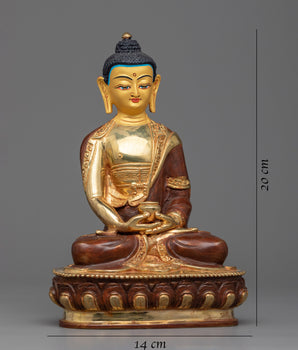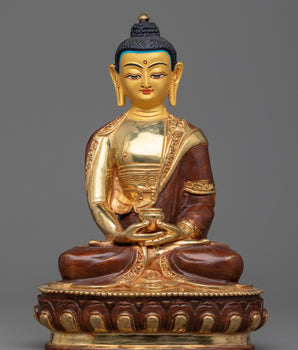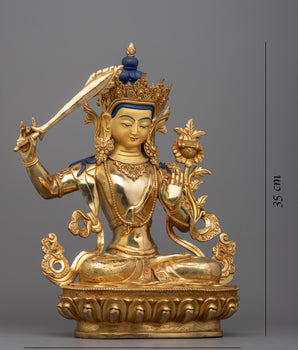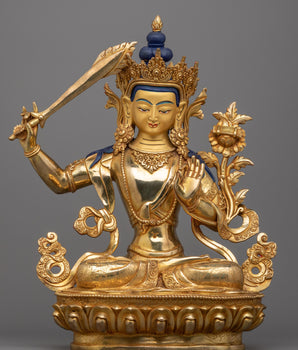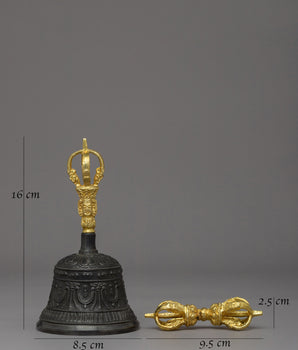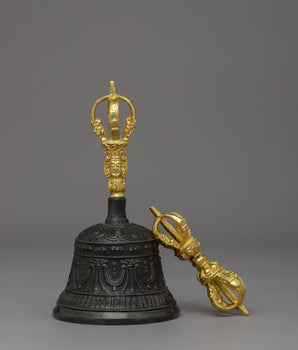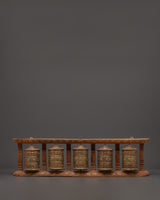
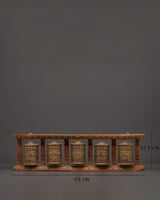
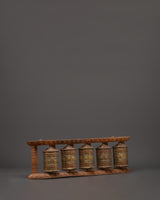
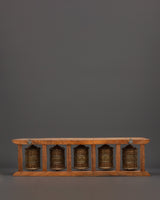
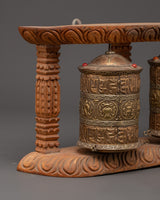
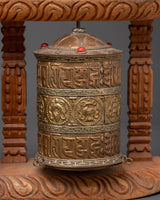
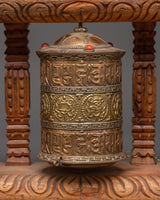
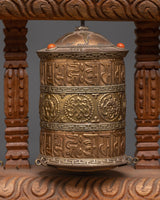
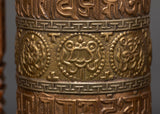
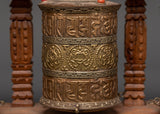
Set of 5 Handcrafted Brass Tibetan Prayer Wheels | Sacred Mantra Spinners

100% AUTHENTIC

HANDMADE

FREE SHIPPING
Spiritual Healing & Sacred Home Decor | For Sacred Home Decor Gift
--------------------------------------------------------
Size: 17.5cm (Height) x 65cm (Width)
Weight: 2.07kg
Materials: Copper body, Brass, White metal, Wood
--------------------------------------------------------
About our Prayer Wheel
This elegant set of five handcrafted brass Tibetan prayer wheels adds spiritual depth and peace to your house. Each prayer wheel is handcrafted with care and features a copper body, brass, and white metal, all set within an attractive wooden frame. This set of sacred mantra spinners, measuring 17.5 cm in height and 65 cm in width, is ideal for your meditation altar or spiritual home decor. The detailed engravings on each wheel are designed to promote spiritual healing and inner serenity, making it a perfect choice for meditation practitioners and anyone seeking to deepen their mindfulness practice.
This prayer wheel set is not only an effective spiritual practice tool, but it also makes a thoughtful and holy home décor gift. The use of copper, brass, and white metal yields an antique style that complements any décor. These Tibetan mantra spinners, whether placed on an altar, shelf, or wall, bring positive energy and peace into your home. This handcrafted set is an ideal present for individuals on a spiritual path, bringing beauty and purpose to their sacred spaces.
Introduction to Prayer Wheel
A prayer wheel is a cylindrical device on a spindle, used in Tibetan Buddhism. It is typically inscribed with the mantra "Om Mani Padme Hum" and rotated by hand as a form of spiritual practice and to accumulate merit. Spinning the wheel is believed to have the same spiritual benefits as reciting the mantra verbally. The use of prayer wheels is widespread in Tibetan Buddhism and has spread to other cultures.
How does the Buddhist Prayer Wheel benefit us?
The benefits associated with rotating the wheel are numerous. It promotes knowledge, compassion, and bodhicitta in the practitioner and enhances siddhis (spiritual powers, such as clairvoyance and precognition). The practitioner can repeat the mantra as often as possible while the wheel is rolling, maintaining a calm, meditative attitude. A Tibetan Buddhist tradition holds that after a practice session, one should dedicate any acquired merits to the benefit of all sentient beings. Then three times Om Ah Hum. This is usually among Tibetans after finishing any Buddhist practice, including the prayer wheel exercise.
How do you set up your own Buddhist Shrine?
• Find a clean, quiet, and uncluttered spot
• Set up an altar table and cover it with an altar cloth that calls to you
• Place your sacred item at the center















